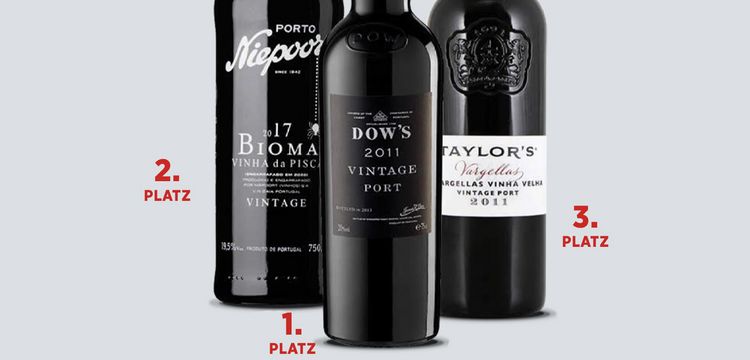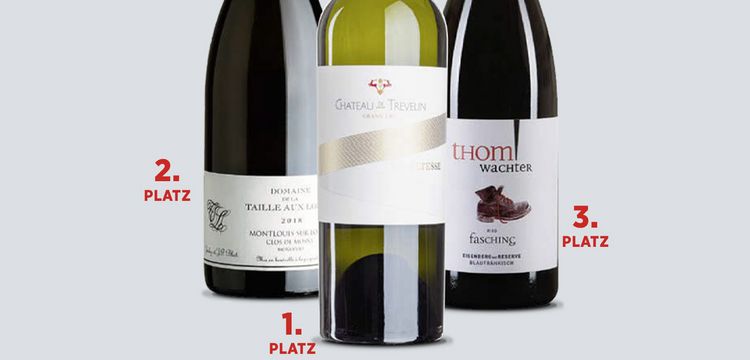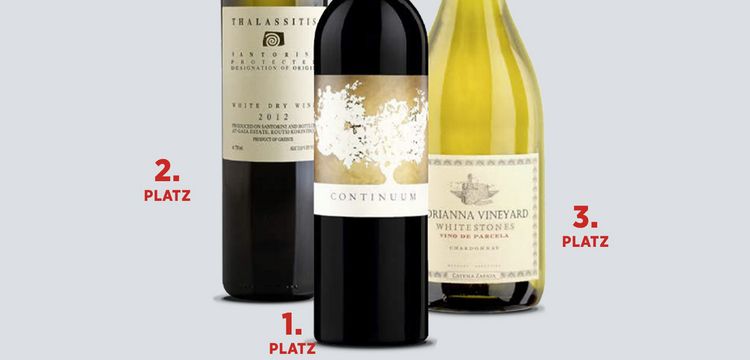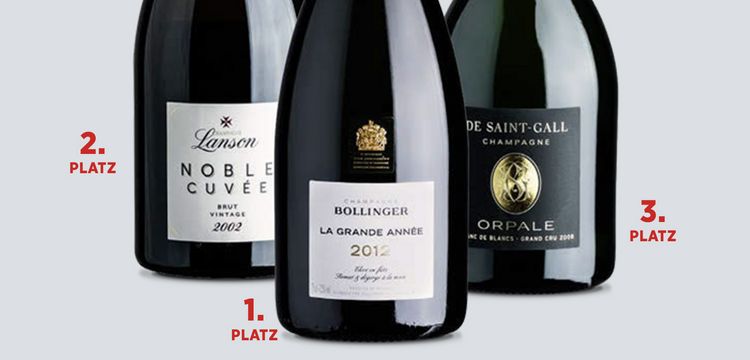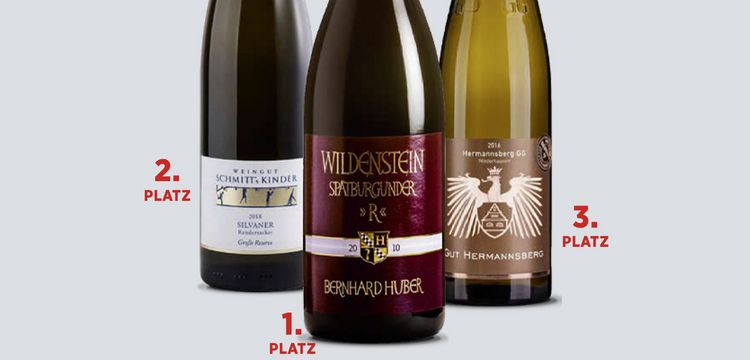Professional panel by VINUM
Universal glasses tested by the experts
Text: Thomas Vaterlaus, photos: Linda Pollari

The perfect Christmas present for wine lovers? A universal glass that allows (almost) every wine to unfold its true potential. The VINUM expert panel tested twelve different universal glasses with six different wines – from sparkling to white and from red to sweet. The top-rated glass by far was the new design from one of the most well-known glass designers: the ‘Josephine No. 2’ from the manufacturer, Josephinenhütte, and designed by Kurt Josef Zalto.
One aspect that was evaluated in this test was regarding how ‘crystal clear’ the universal glasses were. The five handblown, and therefore consequently more expensive glasses, all ranked ahead of the seven machine-made, but significantly cheaper glasses, even though the tasters were encouraged to evaluate only the sensorial qualities of the glasses and not their design and feel. The main reason for the poorer rating of the machine-made glasses were the significantly thicker glass rims, which made it difficult to evenly wet the surface of the tongue and to take small sips of the wine to coat the palate.
The universal glass ‘Josephine No. 2’ by Kurt Josef Zalto received by far the best average rating across all six wines and all seven tasters. The 60-year-old represents the sixth generation of a traditional family of glassmakers from the Waldviertel district in northwest Lower Austria. The innovative glass designer revolutionised the culture of enjoying wine around 20 years ago when he created the ‘Zalto’ glass, which took second place in this panel tasting. The glasses from Kurt Josef Zalto therefore clearly dominated this test. The new glasses, which Zalto created alongside the Josephinenhütte team, are, to a certain extent, a further advancement on the Zalto glass. The most striking feature of the new glass is the kink at the transition from the base of the bowl to the upper bowl. When the wine is moved in the glass, the kink breaks this movement and allows the wine to flow back into the glass in a spiral motion. In doing so, the wine absorbs additional oxygen and, therefore, unfolds its qualities in an almost poetic way.

17 Points | Best Buy
Chef & Sommelier Reveal’Up
Verre à Vin, 50 cl
The relatively tall, shapely glass, which opens out slightly at the top, demonstrates good all-round properties. The full-bodied ripe Rioja and the sweet wine (Sauternes) were shown off well. It seems to be less suitable for mineral-straight white wines (e.g. Chablis).
Price: CHF 7.60
www.victor-meyer.ch
17 Points | Best Buy
Berndorf Sensus
Verre à Vin, 50.2 cl
A modern looking, simple glass with a distinctive upper bowl. It serves well as a sparkling wine glass. The matured red wine (Rioja) was also able to unfold its properties well. The highest-ranking machine-made glass.
Price: CHF 9.35
www.victor-meyer.ch
16.5 Points
Luigi Bormioli Talismano
C499 Verre à Vin, 55 cl
A very pared-down appearance, almost minimalist and rather low-key wine glass that reaches its maximum width almost at the bottom of the bowl. It impressed most with sparkling wine or fruity red wine.
Price: CHF 7.95
www.victor-meyer.ch
18 Points
Vinoble by Berndorf
Verre à Vin, 66 cl
The handblown glass impresses with its classic elegance and long, delicate stem. It was consistently rated well but achieved its highest rating by far with the fruity red wine (Gamay). It also impressed with the Rioja (2nd place).
Price: CHF 23.50
www.berndorf.ch

17.5 Points
Gabriel-Glas Gold Edition
Verre à Vin, 51 cl
Gabriel-Glas pairs modern design with a soft shape. It achieved a good rating in all categories, which speaks to its all-round qualities. Its highest ranking was with the aromatic white wine (Sauvignon Blanc).
Price: CHF 45
www.gabriel-glas.com
16 Points
Zwiesel Verbelle
Chardonnay 1, 48.7 cl
For a machine-made glass, it looks elegant, with a small lower bowl and a tall upper bowl. A no-frills universal glass with style. Most likely to show off its best properties with sparkling wine and aromatic, full-bodied red wine (Rioja).
Price: CHF 8.50
www.victor-meyer.ch
17.5 Points
Grassl Glass
Versatile, 42 cl
With its comparatively short height and rather low capacity, this handblown glass almost seems like an understatement. However, the glass showed off its qualities with all types of wine (3rd to 4th place), with the exception of Rioja (8th place).
Price: CHF 22
www.magnusvinum.ch
18 Points
Zalto Denk’Art
Universal, 53 cl
Slender and almost delicate to the touch, the Zalto glass impressively demonstrated its all-round capabilities. It landed in the top three for all six wines, yet with the sparkling wine (Champagne) and the mineral white wine (Chablis) it rated the best.
Price: CHF 37.90
www.berndorf.ch
18 Points
Josephinenhütte ‘Josephine No. 2’
Universal glass, 55 cl
The new glass designed with a kink by Kurt Josef Zalto is the clear winner of this panel. For four of the seven tasters, it was the best glass. No other glass shows the strengths and also the weaknesses of a wine so clearly.
Price: CHF 49
www.globus.ch
16.5 Points
Zwiesel Sensa
Fruchtig & Fein, 53.5 cl
Despite its considerable size, it is an aesthetically high-quality, slightly angular-looking glass that has been pared down to the essentials. Ranked highly, especially with the mineral-straight white wine (Chablis) and the youthful fresh red wine (Gamay).
Price: CHF 6.40
www.victor-meyer.ch
16 Points
Stölzle Lausitz Vulcano
Universal, 48.5 cl
The base of the ‘Aromakegel’'s bowl (aroma-enhancing taper) is designed to intensify contact with the air and, therefore, help the wine to unfold. The relatively small-looking glass achieved its best rating with the mineral-straight white wine (Chablis).
Price: CHF 12.75
www.techstudio.ch
16 Points
Stölze Lausitz Power
Weissweinkelch, 40 cl
Very clearly designed, almost geometrical-looking, however, unusually heavy-looking glass. In terms of volume, this is the model with the smallest bowl in this sample. Particularly suitable for sparkling wines and aromatic white wines (Sauvignon Blanc).
Price: CHF 7.20
www.microspot.ch
What the tasters say
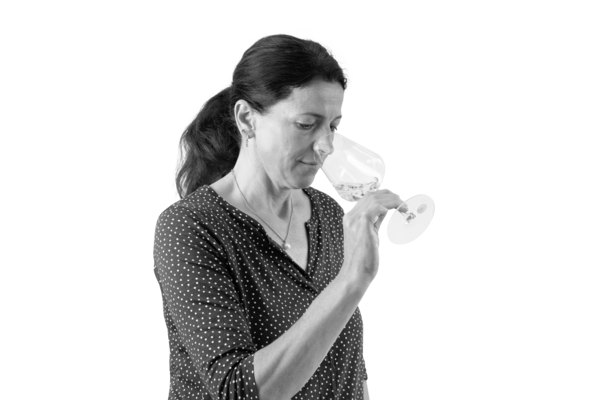
«Having a good glass that really accentuates the wine definitely pays off. There were glasses in this test that managed that, but in others, the wine seemed completely lost. Finding the right glass was most difficult with Champagne, with red wines I felt the clearest differences. For me, it’s also obvious that a very fine, comfortable glass increases alertness and sharpens the senses.»
Lidwina Weh Sommelier, Wohlen

«It cannot be stressed enough how crucial the choice of glass is for the greatest possible wine enjoyment. In fact, there were some glasses in this panel tasting that managed to present the different wines in the best possible way better than others did. Every wine connoisseur should take time to find the glass that best suits them by conducting a similar comparison test.»
Timothy Magnus Wine trader, Zürich
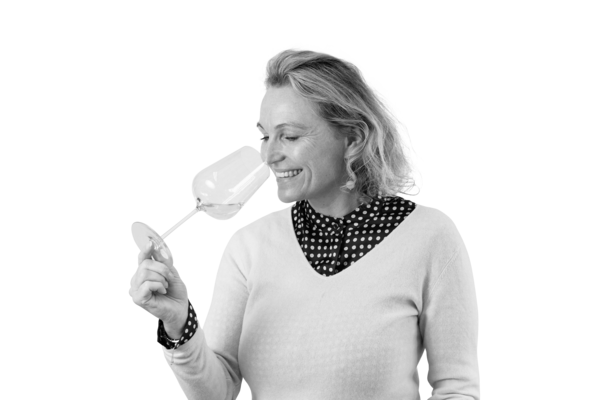
«Of course, the main aim of this test was to determine the glasses in which the wines present themselves best in terms of sensorial qualities. But you can’t disregard the feel and look. And certainly not the considerable weight differences. Some of the machine-made glasses looked extremely clumsy and heavy compared to the handblown glasses. The conclusion is clear: wine-lovers should invest in handblown glasses.»
Nicole Vaculik Sommelier, Meersburg

«Once again it was shown how different wines appear in different glasses, from the aroma to the finish. Not all glasses were equally suitable for all wines. With the sweet wine, the Sauternes, the different qualities of the glasses were least apparent. A universal glass that really works for every wine still does not exist, despite all the progress that has been made.»
Markus Hans Owner of The Markus Hans Group, Sempach Station

Unrated
We have chosen not to provide ratings for the wines that were used in this expert panel to test the universal glasses. However, they are all very good to excellent wines, which would achieve between 16.5 and 17.5 points in the VINUM guide.
Interview with Markus Hans | Owner of the Markus Hans Group in Sempach Station
«No glass can do everything»
There are plenty of options perfectly suited for the tabletops of catering companies and specialist retailers. This also includes wine glasses, some of which he has produced himself. 65-year-old Markus Hans also produces his own wines in the Spanish region of Toro. He finishes by adding, «Despite all the progress made, a universal glass that can do everything still does not exist».
Mr Hans, you have been working with wine glasses for decades. How many different glasses do you have in your cupboard at home?
There are, of course, a lot of them because of their different uses. You actually need four different stemmed glasses: the large classic red wine glass, the spherical burgundy glass in honour of that special case of Pinot Noir, a much smaller white wine glass and a champagne glass.
Now, back to our panel, some glasses have proven that they can bring out different types of wine to their full potential. However, the machine-made glasses came off significantly poorer than handblown glasses...
Yes, unfortunately, that is still the case. A machine-made, rough and ready glass can noticeably reduce the enjoyment of wine – in extreme cases, it can downright destroy the wine.
Do you expect further advances in the machine manufacturing of wine glasses?
Yes, I am convinced that there will soon be ‘machine glasses’ that only an expert will be able to distinguish from handblown glasses. For luxury handblown wine glasses, I see little possibility for improvements to the glass itself. The breaking resistance could maybe be fine-tuned even more.
What have been the most important trends in recent years?
Bowls have become larger, whereas the stems are shorter and more delicate. In addition, we’ve seen mostly only small collections with rarely more than five different glasses come onto the market. It’s curious that the classic champagne coupe that we see in old James Bond films, is clearly becoming socially acceptable again. The trend originated in Spain and has now reached Italy...
How do you assess the development in terms of the relationship between glass quality and price?
In recent years, we’ve seen increasingly better glasses for less money. But that is changing now, mainly because of energy costs. To make glasses gas is needed, the price of which has quadrupled. In addition, Covid-related restrictions in production and transport have meant that there is limited availability of some wine glasses on the market.
Do you wash your handblown glasses in the dishwasher?
Yes, even delicate wine glasses are dishwasher safe these days. But you should never wash them above 60°C. Modern machines now even have a glass washing programme. It’s definitely worth using. And, of course, you should always wash your glasses separately, never with dirty dishes or pans.
There’s still an issue with clean wine glasses smelling...
There are two reasons for smelly glasses: they are either washed in the dishwasher with an incorrect dose of detergent or rinse aid or they are stored in wooden cabinets that have been treated with protective polishes. In this case, it is worth keeping the glasses upright and not on the rim. Smelly glasses can easily be cleaned with water without soap. A simple trick often helps: hold the glass tightly in your hand and swing it over your shoulder as if you were throwing a ball. This often gets rid of the bad smell...


